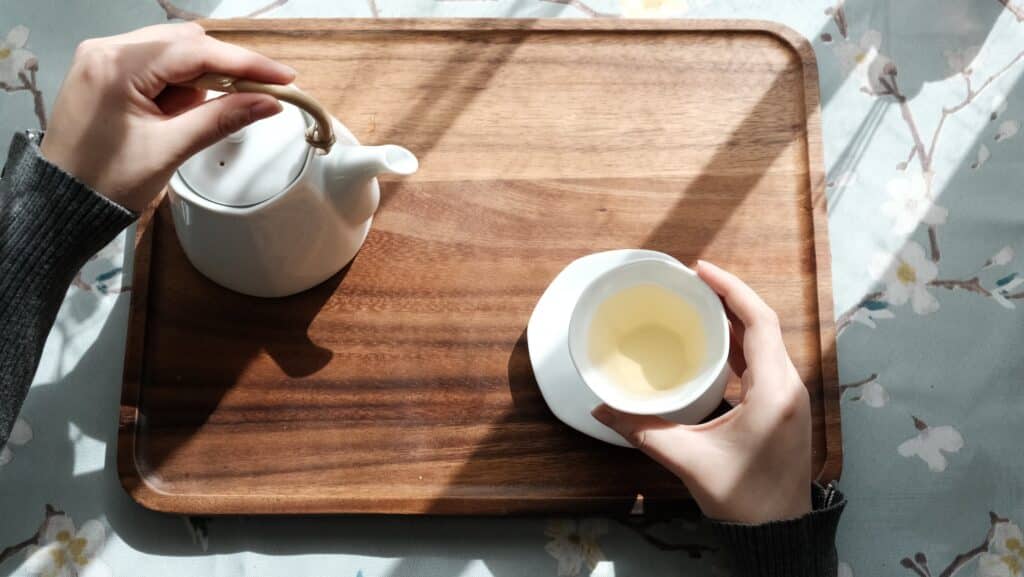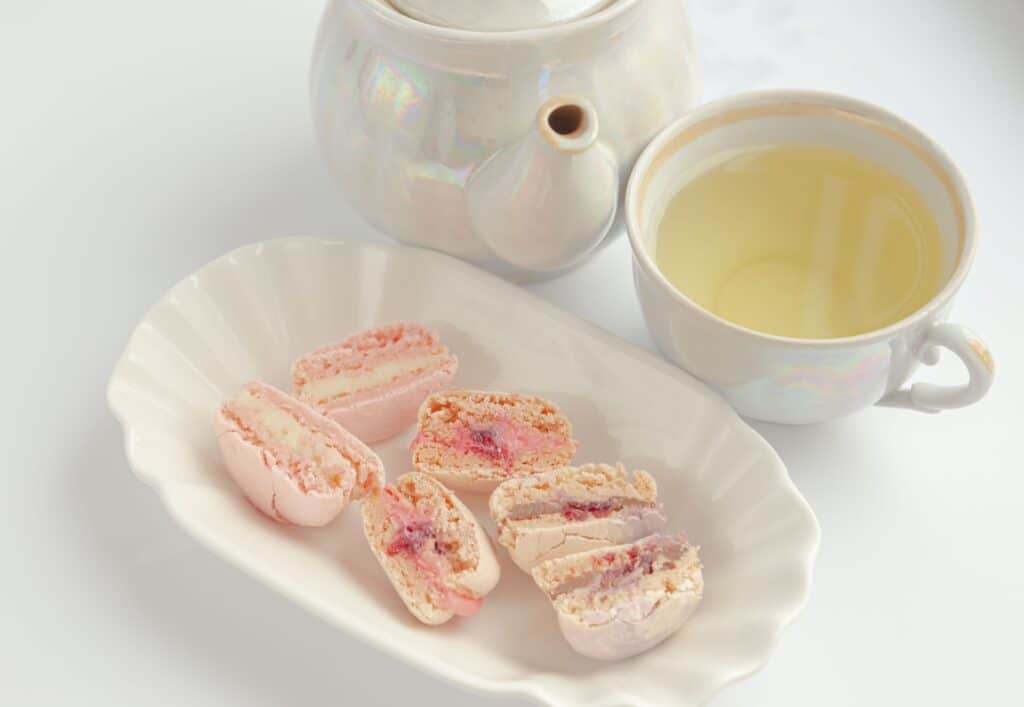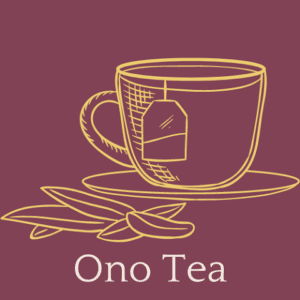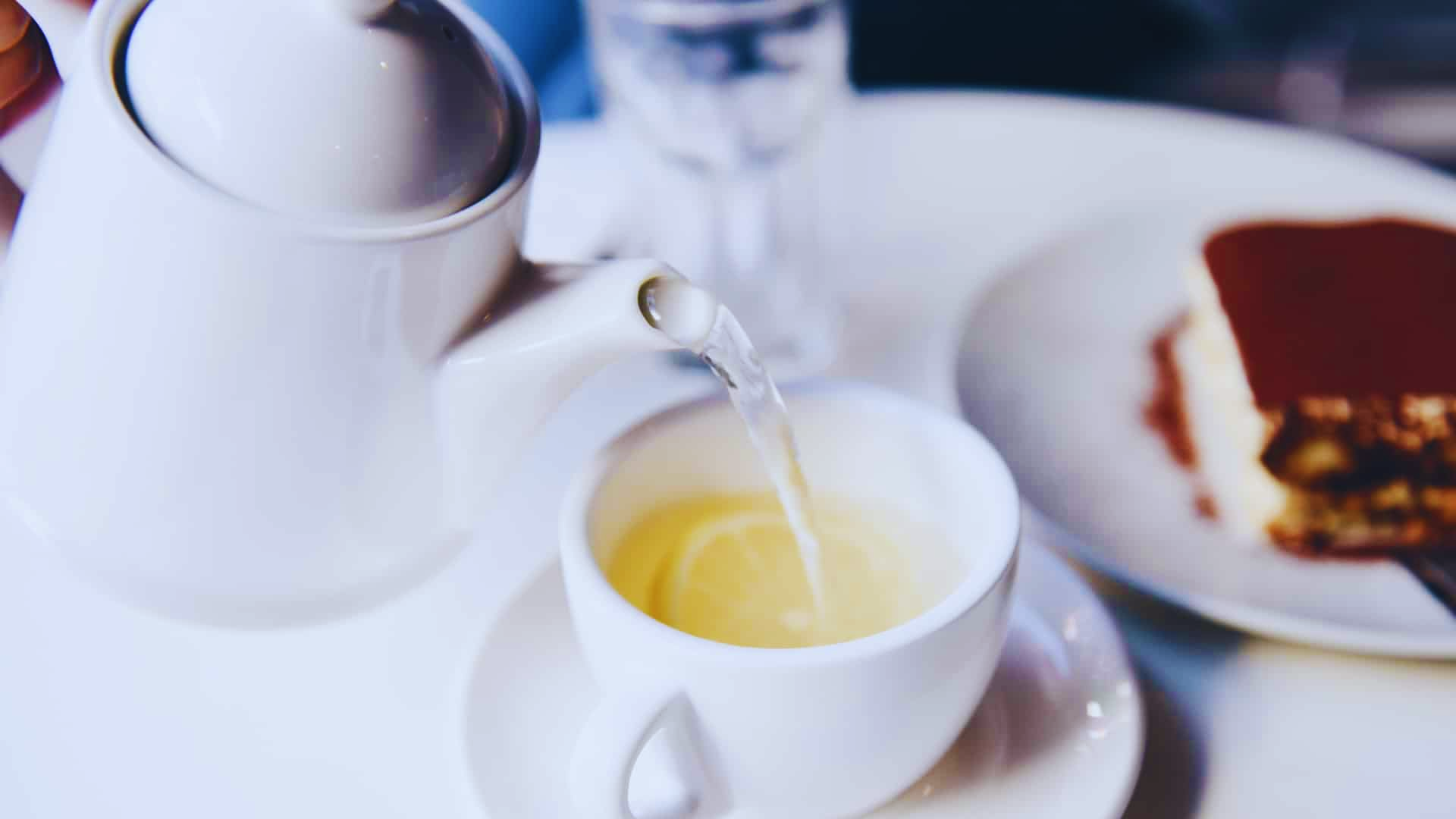A tea plant goes through several processes before reaching your shelf. Consider black tea. It is not as processed as oolong tea. Yet, we’re not hesitant to reassure you that white tea is the least processed type of tea.
White tea’s flavor might change depending on the kind of tea leaves you use. To put the flavor of white tea into words, however, we find that it is quite subtle and floral. White tea is naturally sweet, but the potential health advantages are what really make you want to drink it.
Whether you have questions regarding storing white tea, brewing white tea, or maybe how to consume white tea, we will not leave a single question unanswered. So take out a few moments from your busy schedule and enjoy this very delicate white tea.
What Is White Tea?
Forget about black or green tea; white tea has a very delicate flavor and is not actually white. This tea comes from the same plant as green and black tea and originated in the south of China. The major production grounds for white tea are none other than China and Japan.
However, in recent times, some other Asian countries, including India, Pakistan, and Taiwan, have started growing this tea plant. This white peony tea provides floral notes in the same way green tea leaves do. However, the notes are more intense in the case of white tea.
The popularity of white tea is due to its taste and numerous health benefits. The tea leaves resemble the leaves in autumn. The manufacturers dry young leaves in daylight to provide the best leaves for your tea.
Green teas and black teas go through a similar process. They even come from the same plant, i.e., the Camellia sinensis plant. However, the taste is where the difference arrives. Not only that, studies show that white tea has more caffeine than green tea.
Nevertheless, a comparison can be made between the different types of white tea. Not to mention, only real tea drinkers will be able to tell the difference between the types of white tea.

White Tea Taste
White tea, a pleasure for your delicate taste receptors, tastes like the most exquisite flower in the world. Black and green tea, two other popular types of tea, also have subtle flavors. White tea, however, is distinctive due to its floral aroma and flavor.
To help paint a clearer picture, let’s use a melon as an analogy. Picture yourself enjoying a juicy, fresh slice of melon (medium sweet). Complement it with a garnish of edible flowers. Blend all of these ingredients in a juicer. Drop in a few drops of water. What you’re drinking is now commonly known as “melon juice.” Nevertheless, the flavor shifts when water and flowers are added.
For white tea, however, this flavor is a little too strong. White tea has a slightly sweet taste, a flowery smell, earthy undertones, and a fruity aftertaste. All of these qualities come from the tea’s delicately dried buds.
Although all types of white tea taste the same, the white tea leaves and the process the tea undergoes while cooking will bring a slight change to the taste. This is because how much you brew white tea determines its potency. Moreover, leaves grown in different parts of China smell a bit different. The same is the case with taste.
Caffeine Content in White Tea
The first question people ask about tea is how much caffeine it has. Although this tea has many health benefits, it cannot cover the effects of caffeine in it. Many people avoid caffeine intake because of reasons like stomach issues, cardiovascular diseases, etc.
Thus, if you’re trying to decide between green and white tea, research shows that white tea has the highest caffeine content. If you wish to drink white tea, be sure you don’t have any allergies.
Further research reveals that the age of white tea leaves also affects how much caffeine they contain. Caffeine is more concentrated in young leaves and buds than in older leaves and buds. Due to the drying process, the leaves go through, the concentration drops.
Fresh leaves have a very high caffeine concentration. So, if you want to avoid an intense caffeine intake, it is better to use older white tea leaves. If you have two jars of tea leaves from different dates, the leaves from the most recent jar will have a higher caffeine concentration.
One more thing to mention: potency and caffeine content are inversely related in white tea. The older the leaves, the higher the potency and the lower the caffeine content. The younger the leaves, the lower the potency and the higher the caffeine content.
The Smell of White Tea and Tea Leaves
The taste of white tea is extraordinary. But what’s better is the smell of white tea. If you smell white tea leaves, you will experience a blast of smells. It will be hard to identify each of them at the same time, since white tea tastes like fruits, flowers, and earth.
The smell of the tea will obviously carry all those flavors. But if you talk about the smell that dominates every other smell, it is the slightly sweet floral smell. The fruity notes follow.
It’s not over yet, though; white tea from the Fujian province will have a slightly different flavor and aroma than Indian white tea. So you need to keep such factors in mind.

Types of White Tea
Apart from different tastes and smells, white tea also comes in different types. It is hard to list all of them here. However, we will try listing the most important and popular types of white teas here.
• Darjeeling White Tea
Darjeeling white tea is grown in India. The tea made from these tea leaves is more like green tea. You get to experience the touch of every tea grown in the Himalayas. Moreover, the texture of the tea is slightly woody. Other than that, though, there isn’t a whole lot of difference that can be observed.
• Silver Needle White Tea
Silver-needle tea, made from fresh buds, is the most expensive and best white tea ever made. Full of flavor and aroma, this tea is a delight to drink. Yet, the tea also has more caffeine. Because these tea leaves are so fresh, you can even see and feel the little white hairs that cover each one.
• White Peony
Another addition to the list of white teas, the white peony, is grown in Bai Mu Dan. The only difference between this tea and simple white tea is the shape of the leaves. Other than that, the smell, aroma, and texture are all the same.
• Snow Dragon
The harvesting of this particular white tea is notoriously challenging. Why? Simply because only the buds are used to make this tea and the leaves are thrown away. The distinctive form of these buds is achieved by twisting them.
• Malawi Satemwa Antlers
The Malawi Satemwa Antlers is an African white tea that is grown on the other side of China. There are no leaves or buds in this tea. You only receive the stems. Surprisingly, these stems have a nice flavor with lychee undertones.
• Loose-Leaf White Tea
White tea that is not packaged in tea bags is considered loose-leaf white tea. There are Silver Needles and Snow Dragons to think about. Both of these white teas are loose-leaf teas if they don’t come in tea bags.
White Teas’ Availability
White tea is offered all year. It is cultivated on various continents. Thus, there is no possibility of a shortage. It is accessible throughout the year, including the seasons of winter, summer, and fall.
Benefits of Drinking White Tea
White tea’s potential medicinal benefits are understudied. Even though tea has been consumed for at least a thousand years, it has only recently become a topic of interest and research. But, even with the current state of our understanding, white tea is well on its way to becoming a superfood with a wide range of potential health benefits.
White tea has:
- Antioxidants
- Anti-aging properties
- Small cure for heart disease
- Weight loss benefits
- Anti-inflammatory properties
Because white tea is the least processed kind of tea, it preserves a high concentration of catechins, which are thought to be linked to antioxidant activity. Even though more research is needed to confirm this treatment for sure, it has been shown that the tea has anti-cancer and anti-carcinogenic effects in lung cancer cells.
Nevertheless, we do believe in its extraordinary benefits. From curing stomach issues to aiding weight loss, white tea is the master of everything.

Making White Tea
Making white tea is as easy as making instant noodles. You only need water and tea bags or tea leaves. Sugar is optional, but people prefer adding honey. Why? Because it enhances the taste of white tea and also proves to be less harmful to diabetic patients.
So to make white tea, heat 1.5 cups of water. Do not boil the water before adding the tea leaves. When you see tiny bubbles in the tea, add your tea leaves. Now turn down your flame to medium-low. Allow the tea to simmer for 3 minutes.
Once done, turn your heat to medium-high and brew white tea for around one minute. Strain the tea in your cup and have the best white tea.
Conclusion
White tea has a delightful flavor. The flavors and aromas are consistent across the board. But it takes some skill to distinguish between different types of white. If you want your tea to have the finest flavor and aroma possible, brew it the way we showed you. Having a cup of white tea in the evening can be great, but only if you avoid over-steeping it.

